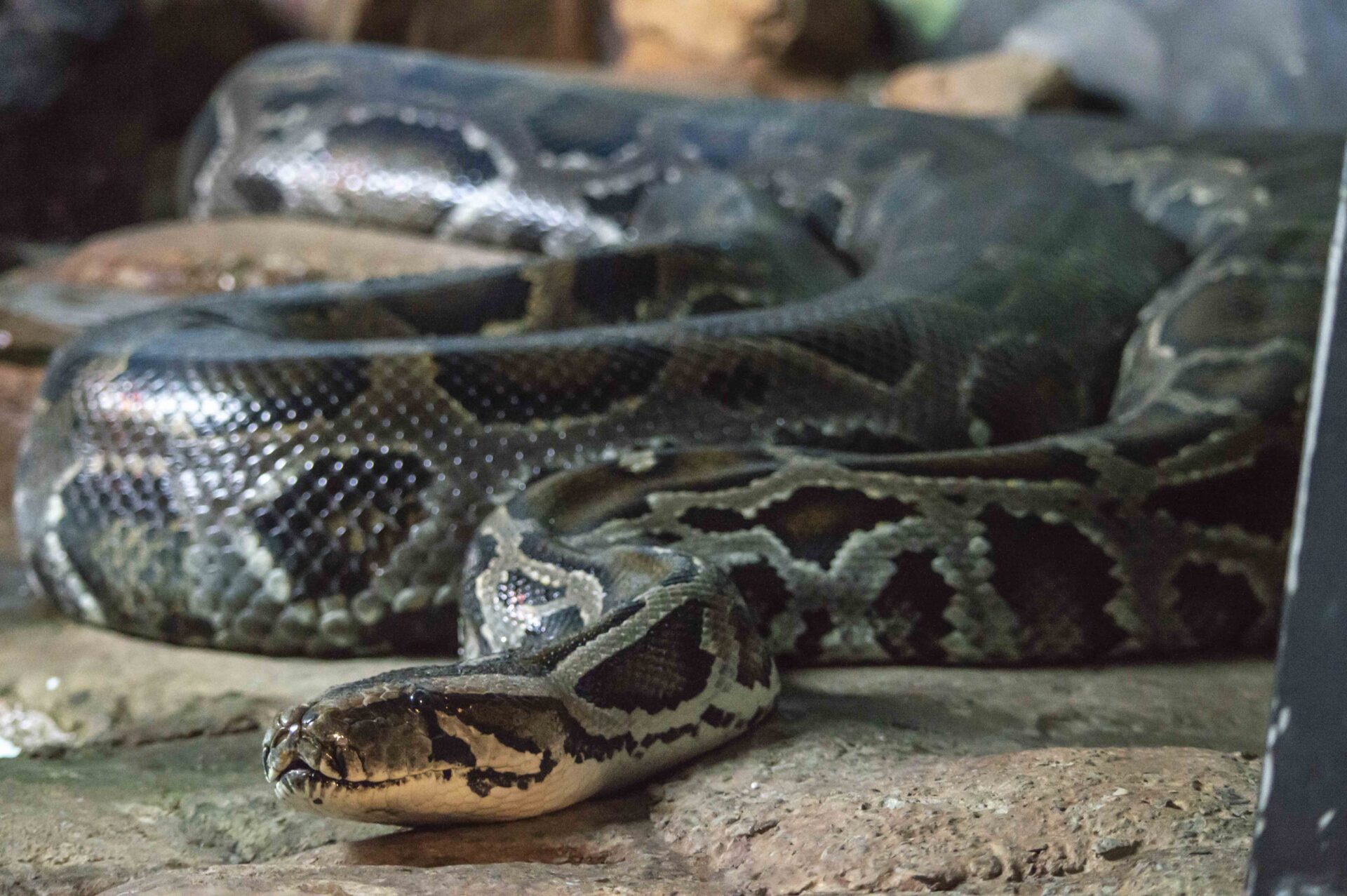Burmese Python

Basic Information:
Scientific Name: Python bivittatus
Habitat: Burmese pythons are native to the grasslands, marshes, swamps, rocky foothills, woodlands, river valleys, and jungles of Southeast Asia in countries such as Thailand, Myanmar, and Cambodia.
Diet: Burmese pythons are known to eat rodents, small mammals, and birds.
Size: 8 to 20 feet long
Weight: 40 to 200 pounds
Lifespan: Around 20 years, but up to 28 years.
Distribution Map:
I.U.C.N. Conservation Status:

What does this mean?
Vulnerable – a species determined by the International Union for Conservation of Nature (I.U.C.N.) to possess a high risk of extinction as a result of rapid population declines of 30 to more than 50 percent over the previous 10 years (or three generations), a current population size of fewer than 1,000 individuals, or other factors.
Our Burmese Pythons:
Spot (Female) – Birthday Unknown
About Burmese Pythons:
One of the largest species of snake in the world, Burmese pythons are native to the jungles and marshes of Southeast Asian countries like Thailand, Myanmar, and Cambodia. They are non-venomous and secure their prey through constriction before swallowing it whole. Around the year 2000, the Burmese python became extremely popular within the illegal pet trade. Unfortunately, most people were not prepared for the massive size of these snakes and – as a result – many Burmese pythons were lost or released in foreign countries. This has been extremely prevalent in the Florida Everglades. According to the US government, there are tens of thousands of wild Burmese pythons living in southern Florida today. This has had a negative impact on the ecosystem and has led to a massive decline in local animal populations as the pythons have either begun to feed on unsuspecting species and/or compete with local species for resources.
Did You Know?!
- Burmese pythons are constrictors that have stretchy ligaments in their jaws that allow them to swallow their food whole.
- Burmese pythons are on threatened species list due to habitat depletion, the pet trade, and hunting for their skins, but they are also an invasive species in Florida.
- Burmese pythons can stay submerged underwater for up to 30 minutes.
- Females Burmese pythons lay clutches of up to 100 eggs, which they incubate for 2-3 months. To keep their eggs warm, they continually contract, or shiver, their muscles.
